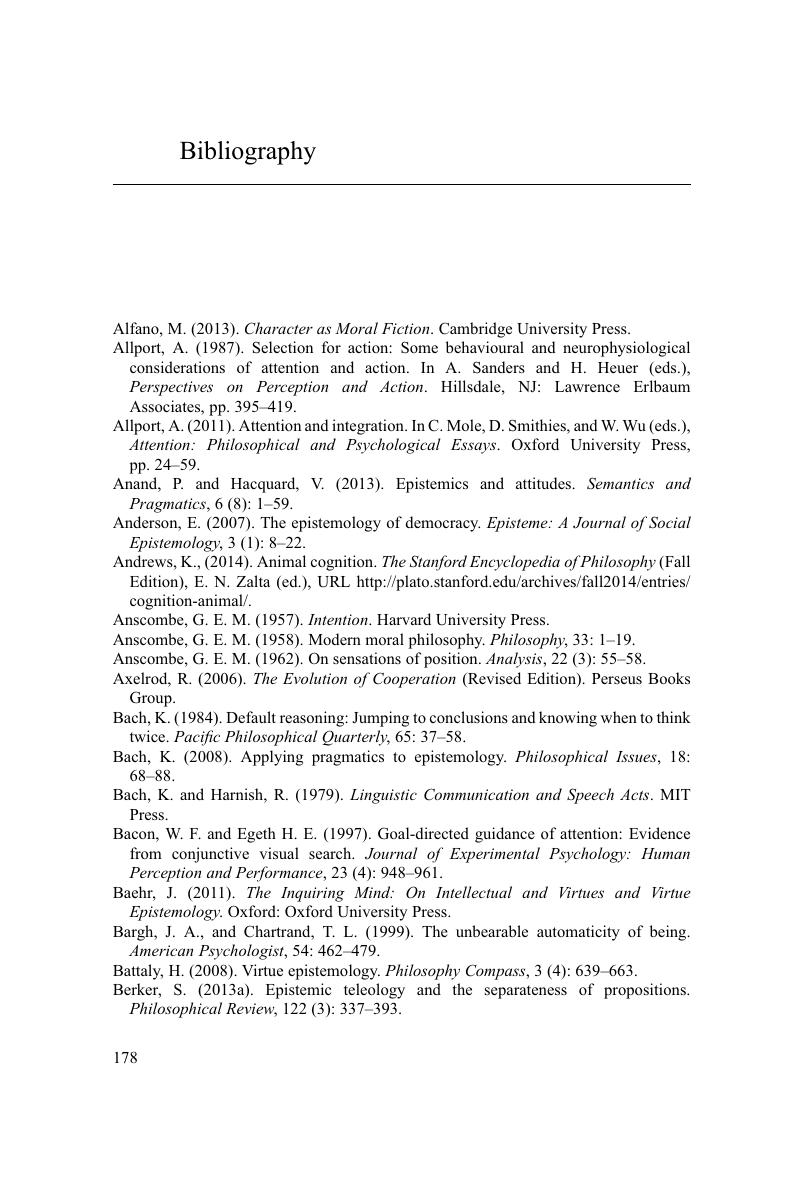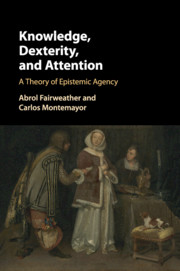Book contents
- Knowledge, Dexterity, and Attention
- Knowledge, Dexterity, and Attention
- Copyright page
- Contents
- Acknowledgments
- Introduction: Why Only Agents Are Knowers
- 1 Epistemic Virtue, Reliable Attention, and Cognitive Constitution
- 2 Meta-epistemology and Epistemic Agency
- 3 Success Semantics and the Etiology of Success
- 4 Epistemic Agency
- 5 Assertion as Epistemic Motivation
- 6 Curiosity and Epistemic Achievement
- 7 Collective Agency, Assertion, and Information
- Bibliography
- Index
- References
Bibliography
Published online by Cambridge University Press: 18 May 2017
- Knowledge, Dexterity, and Attention
- Knowledge, Dexterity, and Attention
- Copyright page
- Contents
- Acknowledgments
- Introduction: Why Only Agents Are Knowers
- 1 Epistemic Virtue, Reliable Attention, and Cognitive Constitution
- 2 Meta-epistemology and Epistemic Agency
- 3 Success Semantics and the Etiology of Success
- 4 Epistemic Agency
- 5 Assertion as Epistemic Motivation
- 6 Curiosity and Epistemic Achievement
- 7 Collective Agency, Assertion, and Information
- Bibliography
- Index
- References
Summary

- Type
- Chapter
- Information
- Knowledge, Dexterity, and AttentionA Theory of Epistemic Agency, pp. 178 - 188Publisher: Cambridge University PressPrint publication year: 2017



